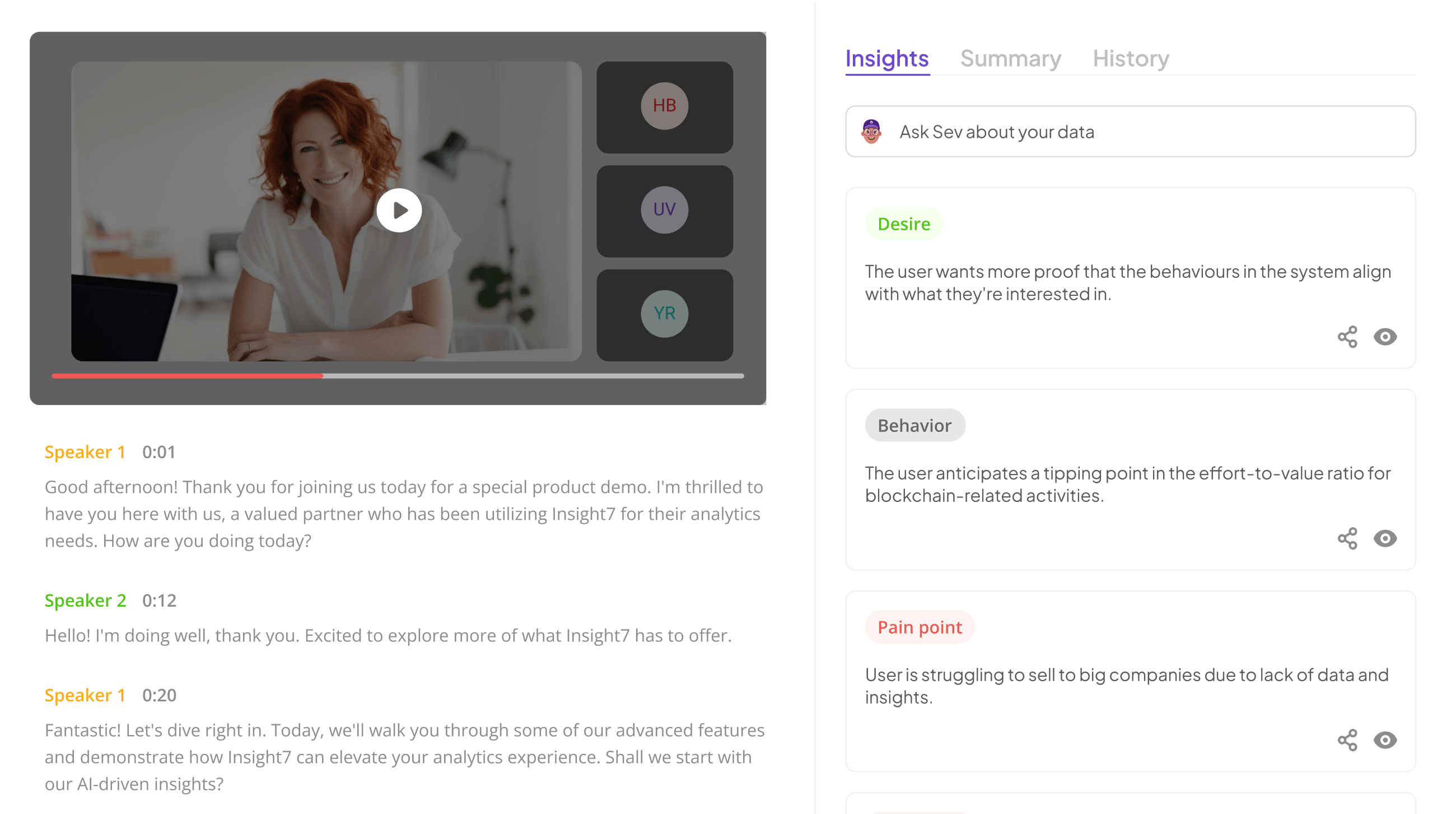7 Steps to Create a Coaching Culture in Your Contact Center
-
Bella Williams
- 10 min read
Coaching Culture Implementation is a transformational approach that can redefine how your contact center operates. Imagine a workplace where every interaction is seen as an opportunity for growth and learning. In such an environment, agents feel empowered and are more equipped to handle customer inquiries effectively. This shift not only enhances individual performance but also positively impacts team dynamics and overall customer satisfaction.
Successfully implementing a coaching culture requires commitment and a structured approach. It fosters an environment that encourages continuous development and collaboration among team members. As leaders invest time in training and mentoring, agents will begin to embrace feedback, which is essential for personal and professional growth. In the following sections, we will explore the strategic steps necessary to cultivate this impactful coaching culture in your contact center.
Analyze & Evaluate Calls. At Scale.

Understanding the Basics of Coaching Culture Implementation
Coaching culture implementation begins with understanding its core principles and practices. It emphasizes ongoing support and guidance, creating an environment where employees feel empowered to learn and grow. Implementing this culture requires a shift in mindset, moving away from traditional management styles to a more collaborative approach. It's essential to foster open communication, where feedback is a constant exchange rather than a periodic evaluation. This transformation lays the groundwork for a supportive atmosphere that thrives on development.
To effectively introduce coaching culture implementation, organizations should consider several key elements. First, clearly defining the objectives of coaching helps align initiatives with overall business goals. Next, investing in training for team leaders ensures that they possess the skills needed to guide their teams effectively. Lastly, maintaining continuous feedback loops enhances the learning experience and enables teams to adapt swiftly to new challenges. By focusing on these foundations, organizations can create a thriving coaching culture that enhances employee performance and satisfaction.
Defining Coaching Culture
A coaching culture is defined by an environment that prioritizes continuous learning and employee development. In a contact center context, this means integrating coaching into everyday interactions and processes. It encourages team members to seek feedback and actively engage in their own growth journeys. Coaching culture implementation fosters a sense of empowerment, motivating staff to enhance their skills and improve performance through regular support and guidance.
Establishing a coaching culture involves aligning the organization’s vision with the strategies for development. Key elements include creating an open dialogue between staff and leaders, providing access to educational resources, and recognizing achievements. When implemented effectively, coaching culture can lead to higher employee satisfaction, improved customer service, and increased team cohesion. By embedding coaching into the fabric of your contact center, you can cultivate a workforce that is adaptable and committed to excellence.
Benefits of Implementing a Coaching Culture in the Contact Center
A strong coaching culture implementation in the contact center fosters an environment ripe for personal and professional growth. Employees feel valued when their development is prioritized, leading to increased morale and job satisfaction. This culture encourages open communication, allowing for regular feedback that helps employees refine their skills and approach. As contact center representatives gain confidence through continuous coaching, their performance improves, directly impacting customer satisfaction and loyalty.
Furthermore, a coaching culture supports a learning mindset, where employees are encouraged to share knowledge and best practices. This collaborative spirit enhances teamwork and promotes a sense of belonging among staff. Enhanced communication between team leaders and representatives creates clearer expectations and accountability, leading to less ambiguity in roles and responsibilities. Ultimately, adopting a coaching culture not only drives individual achievement but also contributes to the overall success of the contact center. By integrating coaching into daily practices, organizations can unlock the full potential of their workforce, resulting in higher retention rates and improved service outcomes.
Steps for Effective Coaching Culture Implementation
Creating a thriving coaching culture in your contact center requires diligent planning and execution. The first step is to conduct a needs assessment to identify the specific skills and areas where your team requires support. This understanding is crucial, as it forms the backbone of your coaching strategies, enabling you to tailor your approach effectively. Once you have a clear grasp of these requirements, you can develop a well-defined vision and strategy that aligns with your organizational goals.
Next, it’s essential to train your team leaders, as they play a pivotal role in modeling the behaviors associated with a coaching culture. Empowering them with the right skills and knowledge will foster an environment of continuous improvement. Make use of technology to facilitate ongoing learning and engagement, which will further enhance the coaching culture implementation. By taking these steps, you lay a solid foundation for sustained success in your contact center.
Step 1: Conduct a Needs Assessment
To create a successful coaching culture in your contact center, Step 1 involves conducting a needs assessment. This crucial phase allows you to understand the specific requirements of your team and identify areas for improvement. Start by gathering information on the existing skill sets of your employees through surveys and performance metrics. This comprehensive analysis will reveal gaps in training and areas where coaching can make the most impact.
Next, engage your team in discussions about their challenges and aspirations. This dialogue encourages ownership and provides valuable insights into their needs. Once you have a clear view of the skills that require development, align these insights with the broader goals of your organization. By doing so, you can ensure that your coaching culture implementation is tailored effectively to enhance performance and customer satisfaction. A thorough needs assessment lays the foundation for the subsequent steps in fostering a thriving coaching environment.
Step 2: Develop a Clear Vision and Strategy
Developing a clear vision and strategy is essential for successful coaching culture implementation in your contact center. A well-defined vision provides direction and clarity on what coaching should achieve within the organization. Start by involving your team in discussions to co-create this vision. Their insights will ensure the strategy aligns with their needs and enhances buy-in across all levels.
Next, outline specific goals for your coaching practices. These might include improving agent performance, enhancing customer satisfaction, or reducing turnover rates. To achieve these goals, ensure you establish measurable milestones and regularly assess progress. This approach keeps your team accountable and emphasizes the continuous nature of coaching culture implementation. Through a focused vision and strategic planning, you lay the groundwork for a thriving coaching environment that cultivates growth, collaboration, and increased engagement.
Step 3: Train Your Team Leaders
Training your team leaders is a key factor in effectively implementing a coaching culture within your contact center. They serve as the primary drivers of motivation and skill development for the agents they manage. Leaders equipped with the right knowledge and techniques can foster an environment where coaching thrives and becomes ingrained in everyday operations.
To successfully train your team leaders, focus on key areas. First, emphasize emotional intelligence and communication skills, fostering an environment where team members feel valued and understood. Next, offer practical coaching frameworks that leaders can apply during one-on-one sessions with their agents. Additionally, encourage them to provide constructive feedback, highlighting areas for improvement while recognizing achievements. Regular workshops and ongoing training sessions will keep team leaders engaged and informed about best practices, ensuring the coaching culture implementation resonates throughout the entire center. By investing in your leaders, you create a strong foundation for a sustainable coaching culture, ultimately benefiting both employees and customers.
Insight7: Leveraging Technology for Continuous Learning
To cultivate a thriving coaching culture in your contact center, integrating technology for continuous learning is essential. Utilizing cutting-edge tools can significantly enhance your team's ability to receive feedback and develop their skills. By employing platforms that facilitate self-paced learning and easy access to resources, you empower employees to take charge of their professional growth. This approach demystifies traditional training sessions and enables ongoing development, thereby fostering a culture of shared learning.
Consider specific technologies that support this initiative. Firstly, platforms like peer-to-peer learning tools can help team members share their experiences and insights. Next, flexible course catalogs allow individuals to choose the skills they wish to enhance based on their unique needs. Lastly, collaborative learning environments promote teamwork and knowledge sharing, reinforcing a collective approach to problem-solving. These solutions not only streamline training but also strengthen engagement, ultimately driving the success of coaching culture implementation in your contact center.
Extract insights from interviews, calls, surveys and reviews for insights in minutes
Nike Learning: Peer-to-Peer Learning Platform
Creating a successful peer-to-peer learning platform requires an environment where employees feel empowered and engaged. This platform facilitates collaboration and knowledge sharing among team members, embodying the essence of coaching culture implementation. By leveraging this model, employees can learn from one another's experiences, enhancing their skills and performance. The key is to foster an open atmosphere where all voices are heard and valued.
The platform includes features that allow users to share insights, upload resources, and initiate discussions around specific challenges. This interaction not only boosts confidence but also encourages colleagues to seek guidance and offer support. Such a peer-driven approach cultivates a resilient coaching culture that aligns with broader organizational goals. Ultimately, investing in a peer-to-peer learning solution helps create a more agile and capable contact center team, ready to adapt to ever-changing customer needs.
OpenSesame: Flexible Course Catalog for Skill Development
The OpenSesame course catalog offers a dynamic solution for organizations striving to develop their employees’ skill sets. In the context of Coaching Culture Implementation, this flexible resource acts as a valuable tool for continuous learning. By providing access to diverse courses, it can address various skill gaps that arise in a contact center environment.
Utilizing this course catalog, team leaders can easily identify relevant programs tailored to their team's development needs. Each course is designed to enhance particular skills such as communication, problem-solving, and customer engagement. Encouraging team members to take advantage of these resources fosters a culture of learning and promotes better performance. Ultimately, integrating OpenSesame into your training strategy not only supports individual growth but also strengthens the coaching culture, leading to a more effective and engaged workforce.
360Learning: Collaborative Learning Environment
Creating an effective collaborative learning environment is essential for successful coaching culture implementation in your contact center. By promoting interaction among team members, it empowers them to share insights and best practices. This shared knowledge fosters an atmosphere of continuous improvement and collective growth, encouraging employees to take ownership of their learning journey.
In this environment, collaboration is not merely encouraged; it is actively facilitated through structured activities and resources. By using engaging tools such as discussion forums and project-based learning, team members can simulate real scenarios, enhancing their skills in a supportive setting. These collaborative efforts strengthen relationships, boost employee morale, and unite the team around common goals, reinforcing the overarching coaching culture. Ultimately, a thriving collaborative learning atmosphere accelerates skill development and drives organizational success.
Conclusion: Achieving Success with Coaching Culture Implementation
Achieving success with coaching culture implementation requires a strategic approach and commitment from all levels of the organization. When executed thoughtfully, a robust coaching culture can lead to improved communication, higher employee engagement, and better customer experiences. Teams will thrive as they embrace continuous feedback and the shared goal of enhancing performance within the contact center.
Ultimately, the effectiveness of coaching culture implementation hinges on ongoing evaluation and adaptation. By fostering an environment that values growth, employees will be more likely to seek improvement and share insights. This cycle of learning not only enriches team dynamics but also strengthens the entire organization, leading to sustainable success in an ever-evolving industry landscape.







